With digital finance advancing at an incredible speed, demand for user-friendly and secure mobile banking apps has skyrocketed in recent years. As consumers increasingly turn to smartphones for managing financial transactions, developing such an app has become a central endeavor for financial institutions and technology enthusiasts.
This guide highlights the intricate aspects of developing an efficient mobile banking application by outlining key elements and strategies to guarantee its successful launch.
Before creating a mobile banking app, one must recognize the rapidly shifting fintech landscape and remember how vital cutting-edge technologies, stringent security measures, and intuitive user experiences are to deliver banking apps that fulfill and exceed user expectations.
This guide focuses on the fundamental steps in development processes, providing insight into user experience, data security, and regulatory compliance issues.
With this exploration, we will investigate the vast array of mobile banking development services currently offered, providing insight into tools and frameworks that ease app creation processes. From concept development through code writing, testing, and deployment, each stage will be explored for an overall view of app creation within mobile banking app development life cycles.
Essential Features to Create a Mobile Banking App for Seamless Transactions
Essential features required to create a mobile banking app highlight the value of professional app development services.
User-Friendly Interface
A user-friendly interface is critical to developing any successful mobile banking app, ensuring users can navigate it effortlessly and making key features like account balances, transaction histories, and fund transfers easily accessible for end-users.
Mobile app development services should prioritize creating a clean yet visually appealing layout so users can quickly and conveniently access critical elements like account balances, transaction histories, and fund transfers.
Secure Authentication
Mobile banking apps must protect user data at all costs from unauthorized access by employing strong authentication measures like biometrics (fingerprint, face recognition) and two-factor authentication to protect it from third-party interference. Partnering with mobile app development services specializing in secure application development is vital in building customer trust.
Real-Time Notifications
Real-time notifications, such as transaction confirmations and billing notifications, are essential in informing users of account activities in real-time. Alerts that alert of transactions, low balances, or bills to pay can enhance user experiences while helping prevent fraudster activities from exploiting accounts en masse. A well-implemented notification system could serve as the cornerstone for mobile banking apps that stand out.
Account Management
Enabling users to manage their accounts seamlessly is an integral feature. This involves viewing account balance transaction histories and accessing statements seamlessly and reliably - something an efficient account management system contributes to. Mobile app development services should focus on designing dynamic and responsive account management interfaces, as this will lead to user satisfaction and loyalty.
Fund Transfers and Payments
Allowing users to move funds between accounts and make payments easily is at the core of every mobile banking app. Offering various payment options like peer-to-peer transfers, bill payments, and mobile wallet compatibility strengthens an app's versatility; mobile app development services should prioritize the integration of secure payment gateways when designing mobile apps.
Card Management
Card management features allow users to effectively and securely manage and oversee their debit/credit cards, including activation, deactivation functions, setting spending limits, and receiving instant notification of card transactions. Including these features increases security while giving users greater control of their financial assets.
Personal Financial Management (PFM) Tools
Integrating Personal Financial Management tools within an app enables users to track spending habits, set budgets, and plan for future goals more quickly. Utilizing mobile app development services with expertise in PFM integration will give users more profound insights into their finances.
Customer Support Integration
A robust customer support system is indispensable for effectively responding to user inquiries and concerns. Integrating features like in-app chat support or helplines directly accessible from within an app ensures seamless customer service experiences; mobile app development services must focus on creating responsive support mechanisms to boost user satisfaction and enhance their success.
Cross-Platform Compatibility
Mobile banking apps must support various iOS and Android platforms to meet user expectations across devices. Partnering with cross-platform app development services will guarantee a consistent experience on every device consumers use.
Compliance
Mobile banking apps must comply with financial and data protection regulations as an absolute priority, so mobile app development services must prioritize creating apps that conform with industry standards regarding user security and data privacy protection. Regular updates and audits will help keep pace with ever-evolving regulatory requirements.
Steps to Create a Mobile Banking App
Mobile Banking Development Services are essential in this complex app creation process. Here, we outline their necessary steps.
Market Research and Analysis
Market research is vital to its success before embarking on your mobile banking app development journey. Deliberate over your target audience demographics, study competitor apps, and stay apprised of current mobile banking technology trends - this step lays the groundwork for creating an app explicitly tailored to user preferences and needs.
Establish Objectives and Features
Once your objectives have been set, list what features your mobile banking app will include, such as account management, fund transfers, and notifications of bill payments.
Compliance with Regulatory Standards
Financial services are highly regulated, making compliance with industry standards and regulations non-negotiable. Ensure your mobile banking app abides by data protection laws, security standards, and any regional restrictions specific to where the app will operate.
Select an Appropriate Technology Stack
Selecting an optimal technology stack is critical to the performance and scalability of your mobile banking app, so carefully consider factors like platform compatibility, database management systems, programming languages, etc, when making this decision. Collaborate with Mobile Banking Development Services so they can use their expertise in selecting an ideal tech stack solution for your app.
User Interface and Experience Design (UI/UX Design)
A visually attractive and user-friendly user experience design is a critical element to the success of any mobile banking app. Collaborate with experienced designers to craft an intuitive plan that provides users with a positive user journey - prioritize simplicity, user-friendliness, and accessibility so that your product effectively meets its target user base.
Security Measures
Security is of utmost importance in mobile banking. Implement appropriate protections like two-factor authentication, encryption, and biometric verification to keep user data and transactions safe while revamping security protocols against emerging threats.
Development and Testing
Engage a reliable Mobile Banking Development Service to bring your app to fruition. Ensure the development process is iterative for continuous testing and refinement; rigorous performance tests for functionality, security, and performance are vital in producing bug-free apps with reliable banking features.
Integration with Existing Banking Systems
A mobile banking app must integrate seamlessly with existing banking systems for reliable, real-time, and accurate information delivery. Work closely with IT experts in developing an easy and safe connection between the app and core banking systems.
Quality Assurance and User Testing
Before your app goes live, conduct thorough quality assurance and user testing to detect and rectify any glitches, bugs, or usability issues, and invite real users for beta testing to gather valuable feedback and make necessary modifications.
Launch and Marketing Strategy
To launch and market a mobile banking app successfully, an effective launch and marketing plan must take into account elements like timing, channels used, promotional activities undertaken as well as various digital tools available to increase awareness, create downloads, and monitor user responses post-launch for further alterations and refinements.
User Support and Continuous Improvement
Setting up an efficient support system to respond promptly to user inquiries, concerns, and feedback is imperative. Also critical are continuous performance reviews on apps to gain user insights and implement updates that improve the end-users features, security, or overall satisfaction.
Conduct Regular Security Audits and Updates
With digital spaces constantly shifting and security threats evolving quickly, regular security audits to identify vulnerabilities and updates designed to fortify against threats are essential in staying ahead of emerging cybersecurity concerns. Conduct periodic reviews to respond to any emerging security challenges proactively.
Cost to make a Mobile Banking App.
Mobile banking app development cost estimates vary considerably based on various considerations, with Android and iOS app development key considerations. Features, design elements, security measures, and location all play into this equation of development costs.
Cost estimates for Android app development typically fall in the $25,000 to $150,000 range, depending on its features and functionalities. Since Android apps can reach out to a broader user base than their competing solutions due to being open-source software platforms, development often becomes more challenging due to device and screen size disparity, requiring increased deployment and update management complexities.
On iOS platforms, app development costs typically begin around $30k and may extend up to around $170. While Apple provides a powerful and user-friendly environment that simplifies development efforts, following its stringent guidelines may incur higher development expenses and additional compatibility costs across devices.
Security features, compliance with regulatory standards, and ongoing maintenance can add significant costs. To provide users with a flawless user experience, investing in robust security protocols is of utmost importance - particularly with financial applications. Furthermore, complying with industry regulations like GDPR or HIPAA may necessitate extra resources.
How do you save costs while creating a mobile banking app?
Key strategies to save costs when developing a mobile banking app without compromising functionality or security are discussed here.
Comprehensive Planning
To begin any development process successfully, it's critical that extensive planning be performed beforehand. Define and prioritize app features and functionalities based on user needs while creating an in-depth roadmap of this journey.
Planned development helps avoid unnecessary iterations and cost overruns by clearly outlining core features required of your minimum viable product (MVP) while adding functionalities later, depending on user feedback and market trends.
Open Source Technologies
To build your mobile banking app cost-effectively and access a range of modules and libraries quickly and cost-efficiently. Open-source solutions offer reliable alternatives to proprietary solutions with lower maintenance fees than proprietary versions do.
By taking advantage of open-source frameworks, developers can speed up development time, lower licensing fees, and gain access to an inclusive community for issue resolution and updates.
Cross-Platform Development
Cross-platform development frameworks like React Native or Flutter can significantly cut development costs.
Cross-platform development frameworks make cross-platform programming possible for developers by enabling them to write one codebase and deploy it across various platforms, saving time and effort compared to developing individual native apps for iOS and Android.
While cross-platform development does not sacrifice user experience or functionality, cross-platform development may result in substantial savings without impacting app performance negatively.
Cloud Computing
Cloud computing can reduce the costs of infrastructure associated with services like Amazon Web Services, Microsoft Azure or Google Cloud.
Cloud computing allows for flexible cost control by charging only for what resources are used - eliminating significant upfront investments in physical servers and providing improved security measures to facilitate scaling as your mobile banking app grows both user base and complexity.
Agile Development Method (Agile Methodology)
Implementing an agile development methodology increases flexibility and efficiency during the design and creation. Agile permits iterative development processes that facilitate rapid responses to customer feedback or changing requirements with swift adjustment times.
This method helps minimize costly errors by quickly detecting and rectifying issues during development. Regular sprints and feedback loops help ensure the final product fulfills user expectations closely, thus decreasing post-launch revision costs.
Security by Design
Initially, it may seem counter-intuitive, but investing in robust security measures immediately may save costs in the long run. Implementing features during initial development stages helps mitigate data breach risks that could later cost money or harm reputational value.
Engaging early with security issues reduces the need for expensive retrofits or patches later, saving both time and money in retrofitting or patching efforts.
User Feedback and Iteration
Regular user feedback collection during development helps identify potential issues early on and prioritize features that matter most to users, ensuring more efficient resource use. By gathering user opinions during this production stage, developers can prioritize those that benefit the end-user most while eliminating costly post-launch modifications caused by real user experiences and preferences that change as the app develops over time.
Outsource Development
Outsourcing development processes is one way of cutting costs during app creation. By accessing skilled developers at reduced rates through outsourcing partners, the quality and security of mobile banking apps will remain assured. However, choosing reliable outsourcing partners that meet both project specifications and your communication expectations are essential components for their successful partnerships.
The process to hire remote mobile app developer for Mobile Banking App
Hire remote mobile app developer to create a Mobile Banking App successfully.
Step 1: Define Project Requirements
Before initiating the hiring process for your Mobile Banking App project, its requirements must be laid out. Consider features, functionalities, and design elements you envision before considering security protocols, user experience considerations, and compatibility across devices.
By developing an accurate project scope, you will be better prepared to communicate your requirements to prospective remote mobile app developers.
Step 2: Draft an Engaging Job Description
A well-crafted job description can be essential in recruiting talent for developing remote mobile app solutions. Be sure to clearly outline all qualifications, skills, and experiences required of remote mobile app developers, including technical skills like Swift for iOS or Kotlin on Android and experience with frameworks for apps and banking industry regulations.
Bring up any additional skills that would prove helpful for the project, like user interface/user experience (UI/UX design or cybersecurity expertise).
Step 3: Selecting an Appropriate Hiring Platform
The third step to finding and hiring remote mobile app developers should be selecting an ideal hiring platform. Various online marketplaces connect businesses with skilled developers; famous examples are Upwork, Toptal, and Freelancer, which enable companies to view profiles, portfolios, and ratings of potential candidates before selecting someone from these options.
Look into job boards or forums dedicated explicitly to app development, as other potential sources may exist.
Step 4: Screen Candidates Carefully
Once applications have been received, it's time to screen each potential developer carefully. Look for individuals with extensive experience developing mobile banking apps, specifically in finance and banking.
Scrutinize their portfolio, paying particular attention to the quality of past work and the complexity of projects they have handled. Conduct in-depth interviews to ascertain communication, problem-solving, and compatibility with project requirements.
Step 5: Test Technical Proficiency
Conduct a technical proficiency exam to verify whether the candidate possesses all the technical abilities needed. This could involve coding challenges or problem-solving scenarios related to mobile app development; knowledge testing on data security, encryption, and user authentication is especially crucial when developing Mobile Banking Apps.
Step 6: Evaluate Remote Work Experience
Due to the remote nature of collaboration, we must assess a candidate's remote working experience. Ask about familiarity with collaboration tools, communication platforms, and time management skills - especially as remote mobile app developers must be proven to work autonomously while remaining engaged with the project team.
Step 7: Consider Cultural Fit
Beyond technical abilities and experience, assess a developer's cultural fit within your organization. Effective collaboration in remote work environments relies heavily on communication.
Evaluate their ability to align with your company values, goals, and work culture, so you have an enjoyable working relationship that contributes to its success. A harmonious working environment will contribute to its ultimate success as part of your Mobile Banking App project.
Step 8: Negotiate Terms and Conditions
Once you've identified an ideal candidate, negotiate their terms of engagement. Discuss project timelines, milestones, payment structure, and contractual agreements before outlining updates, communications frequency, and project reporting expectations.
Conclusion
Beginning the journey to Create a Mobile Banking App requires careful preparation. As digital technologies advance, users have never had more need for secure yet user-friendly mobile banking solutions than now. Therefore, working with reliable app development companies is paramount for navigating through all its complexities and ensuring success in creating such solutions.
Selecting an experienced mobile app development partner is vital in shaping an app's functionality, security, and overall success. Mobile app development companies in denver possess expertise in the design, development, and implementation of banking apps to help businesses navigate all the nuances involved in creating something that meets user expectations and industry requirements.
Building a mobile banking app involves more than simply writing code; it involves extensive knowledge of security protocols, compliance regulations, and user experience design. Partnering with experienced developers enables the integration of cutting-edge technologies so your app remains competitive in today's rapidly advancing fintech landscape.
FAQs
1. What are the first steps involved in developing a mobile banking app?
Conduct a thorough market analysis to understand user needs, competitor offerings, and regulatory requirements and create an outline for features and functions of an application that best suits its users.
2. What should a mobile banking app include to be successful?
Key features should include user authentication, account management, fund transfers, transaction history tracking, real-time alerts, and secure API integration for optimal operations.
3. How can I ensure the security of a mobile banking app?
Compliance is paramount - use robust encryption protocols, biometric authentication, secure APIs, and conduct regular security audits to maintain this. Be mindful of industry regulations while staying abreast of emerging security technologies.
4. What platforms should I target when creating a mobile banking app?
Consider both major platforms - iOS and Android - to reach as broad an audience. Utilize cross-platform development frameworks for improved efficiency and cost-efficiency.
5. How can I make my mobile banking app user-friendly?
Achieve this through intuitive user interface design, straightforward navigation, and clean design features. Consider conducting usability tests as an evaluation method to gather feedback and refine based on customer preferences.
6. What legal and compliance factors must I keep in mind?
Be mindful to abide by data protection laws, banking regulations, and compliance standards when developing smartphone mobile banking apps. Work directly with legal specialists to meet all necessary compliance specifications for these applications.
7. How can I incorporate third-party services into my mobile banking app?
Utilize secure APIs and comply with industry standards when integrating them—partner with trusted third-party service providers and conduct extensive tests to ensure compatibility and safety.
8. How can I optimize the performance of a mobile banking app?
For optimum results, regularly update and optimize code before employing caching mechanisms to boost app performance. Conduct performance testing regularly to identify and address bottlenecks within your system.
9. What role should customer support play in mobile banking apps?
We offer robust support across various channels - chat, email, and phone. Prompt response times and resolution of user issues add to an exceptional user experience.
10. What can I do after creating my mobile banking app to promote it after development?
Develop and execute an integrated marketing strategy, including social media promotion, app store optimization, and collaborations with financial influencers. Inviting user reviews helps build credibility while drawing in new users.





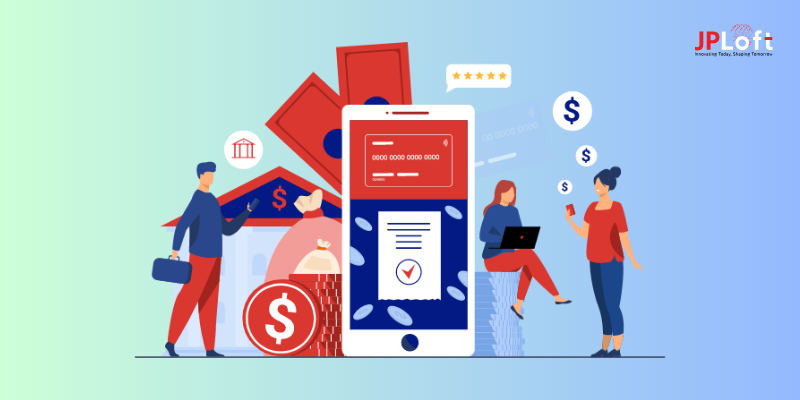

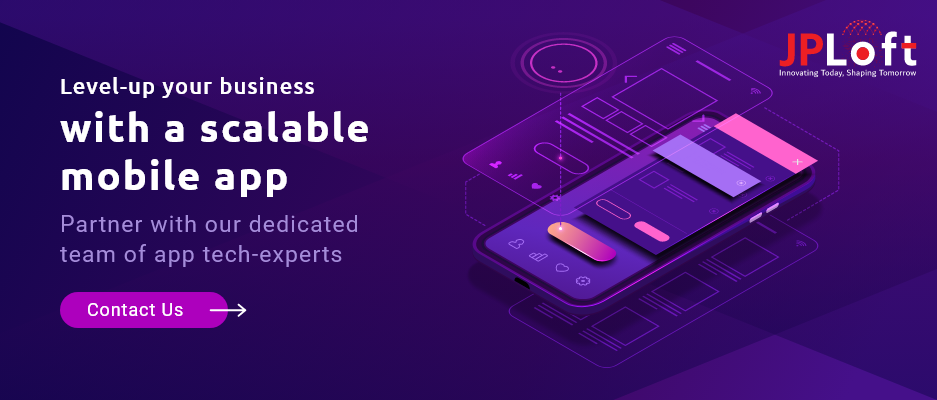

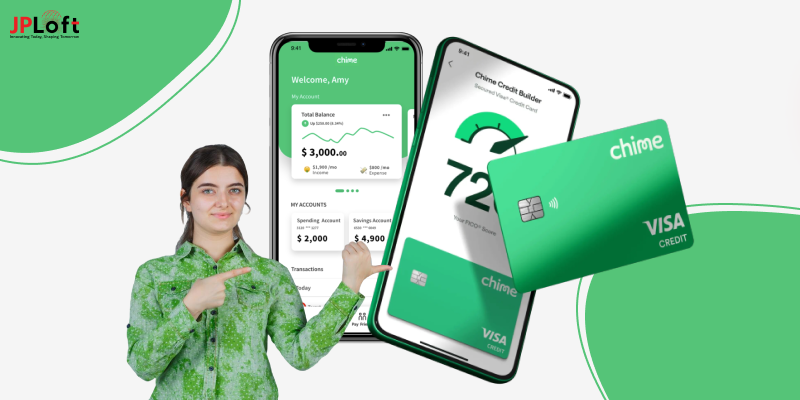
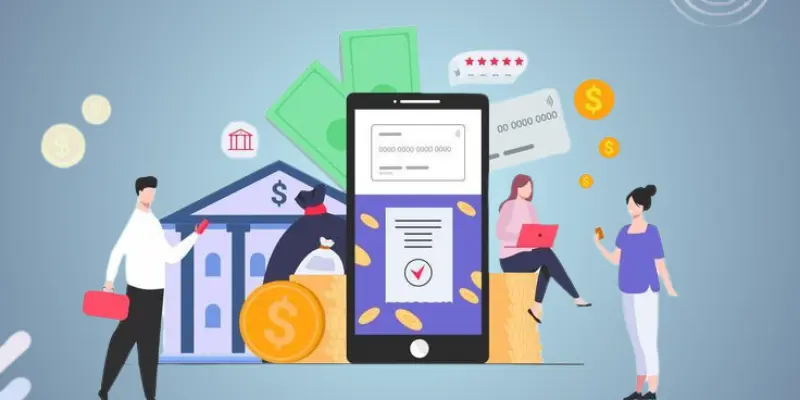
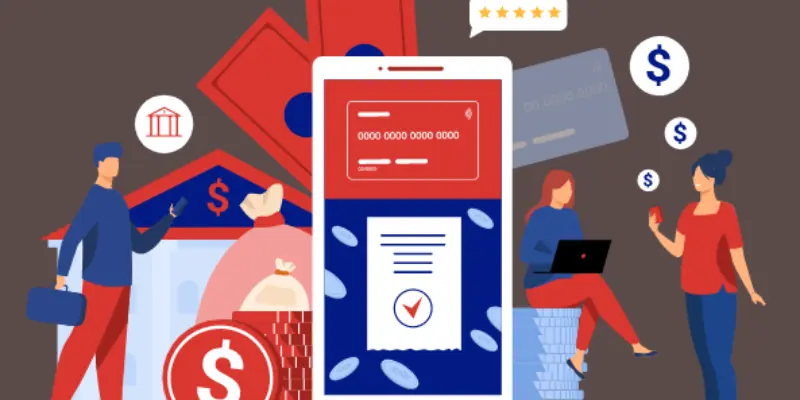


Share this blog